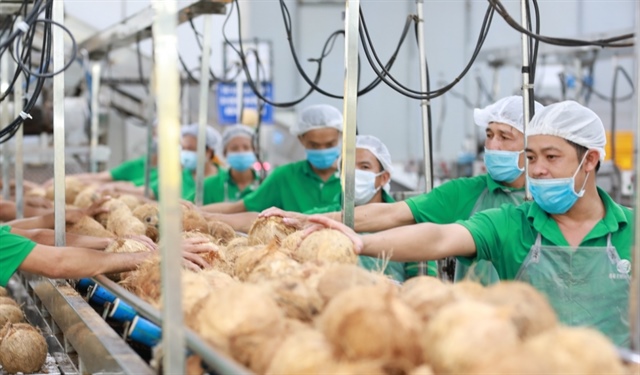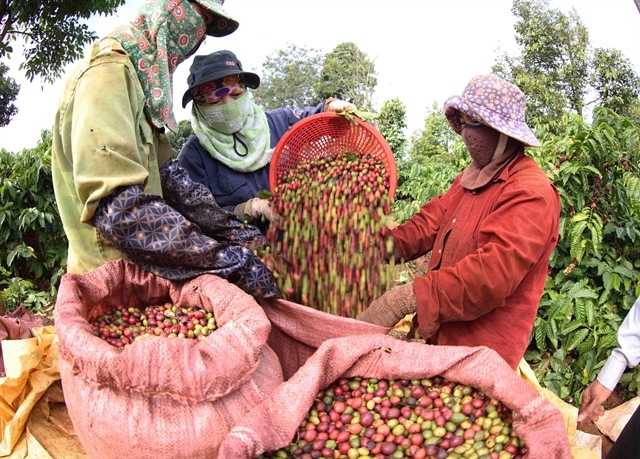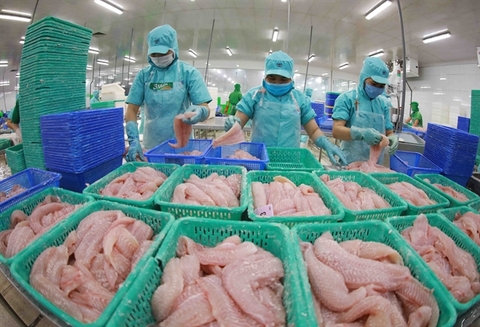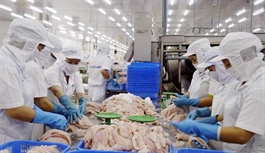Vietnam’s agro-forestry-fishery exports hit record high
Vietnam’s agro-forestry-fishery exports hit record high
Vietnam raked in US$49 billion in export revenue from agro-forestry-fishery products between January and November of this year, exceeding the previous record of $48.6 billion set in 2021, according to the Ministry of Agriculture and Rural Development.
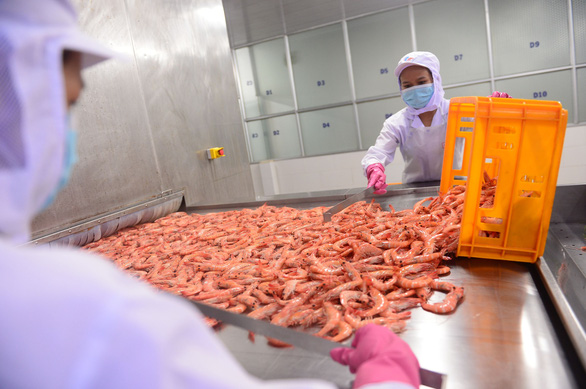
The ministry on Wednesday shared that Vietnam exported over $4.27 billion worth of agro-forestry-fishery products in November alone, down nearly five percent year on year.
During the same period, the country’s seafood export turnover hit $10.14 billion for the first time ever.
The Vietnam Association of Seafood Exporters and Producers (VASEP) will hold a ceremony to celebrate the milestone on December 10.
From January to November, there were eight commodities with export turnovers that surpassed $2 billion, including coffee ($3.5 billion, up 31.5 percent), rubber ($2.9 billion, up 3.2 percent), rice ($3.2 billion, up 6.9 percent), tra fish ($2.2 billion, up 61 percent), shrimp ($4.1 billion, up 14.6 percent), and wood and wooden products ($14.6 billion, up 9 percent).
Asian countries remained the largest importers of Vietnam’s agro-forestry-fishery products with nearly 45 percent of the market share, followed by America with 27 percent, and Europe with 11 percent.
As for importing countries, the U.S. took the lead with $12.3 billion.
China came in second with some $9.3 billion, followed by Japan with $3.9 billion, and South Korea with $2.3 billion.
According to the Ministry of Agriculture and Rural Development, Vietnam, China’s unwillingness to end its zero-COVID policy will create a challenging future for Vietnamese farm produce for the foreseeable future.
Moreover, due to the depreciation of China’s renminbi and Thailand’s baht over the Vietnam dong and U.S. dollar, China will likely increase imports from Thailand and reduce imports from Vietnam.
Meanwhile, Vietnam’s exports of wood pellets to the European Union (EU) remain low due to Europe’s strict origin traceability requirements.
The EU’s requirements for wood pellet imports are more stringent than those of Japan and South Korea, which is a significant challenge that will require Vietnamese exporters to improve their equipment and technology.
The Ministry of Agriculture and Rural Development will continue popularizing a protocol on the official export of Vietnamese durians to China, requirements for passion fruit exports to China, and requirements for pomelo exports to the U.S.
The ministry will also accelerate negotiations over a protocol on phytosanitary requirements for dragon fruit, longan, litchi, rambutan, and mango exports to China.
It will also work with the General Administration of Customs of China to launch weekly online inspections into banana and durian batches shipped from Vietnam to its northern neighbor.
In addition, it will seek ways to remove technical and trade hindrances and pave the way for the export of Vietnamese products to other large and potential markets, such as Japan, South Korea, Myanmar, Australia, and New Zealand via official channels.
Specialized agencies will work with Japanese phytosanitary inspectors who come to Vietnam to check local dragon fruit, mango, and longan processing units in order to boost the export of these products.
The government assigned the Ministry of Agriculture and Rural Development an agro-forestry-fishery export revenue target of $50 billion this year.
If the export growth momentum is maintained in the last month of the year, the country’s agro-forestry-fishery exports this year will likely reach $53 billion.


